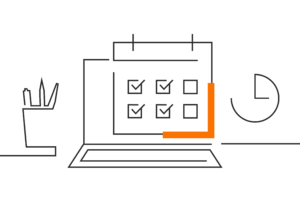Have you ever looked at a flyer, business card, PowerPoint presentation, video, app or advertisement and thought “something about this design doesn’t seem right”. More often than not you just can’t put your finger on why. A high percentage of the time the simple answer is white space, or more specifically poorly structured white space.
Over the years your eyes and mind have been taught to expect information in a certain format: Left to right, top to bottom. The advances of our viewing life have compounded this further, with the addition of all the screens we interact with.
So what is it, and why is it so important in design?
White space or negative space is unmarked space in a layout, such as margins around a page, space between lines and paragraphs, etc. It’s a very important tool in design, and today we talk about why you should have enough white space in your layout.

an example of bad white space

an example of good use of white space, notice how much easier it is to read the paragraph
Focus
You can control what the user sees first using white space. Large space between layout elements helps to prioritise the focus area for the audience. Surrounding an element with a generous amount of white space draws the audience’s attention to it.
Logic
One of the rules our mind uses to organise visual information is the Law of Proximity. It means that objects close to each other appear similar. Hence white space can be used to group objects and convey logic between elements on a page.

note the focus is shared equally between each shape, with no particular emphasis on any.

with the grouping below the user is taught that there is a distinction or hierarchy to the shapes.
Message
It’s common for some to consider white space as wasted space; they feel it should be utilised to fit in more content. But actually, white space helps get your message across more effectively. Since it’s difficult to comprehend a large amount of information when a page is too busy, the user tends to skip the whole thing. By cutting down the content and leaving enough white space on a page, the cognitive load is minimised, and your audience is more likely to read and remember your key message.
Aesthetic
Design with optimum white space communicates cleanness, freshness, and elegance. In the design of premium products, you will find more with a generous amount of white space than not. If you want your design to look balanced and sophisticated, having the right amount of white space is crucial.

Conclusion
White space is a powerful design tool and should be kept in mind at all times. Whether it’s a PowerPoint slide, document or video storyboard, proper use of white space improves the look of your design and delivers your message more effectively.




